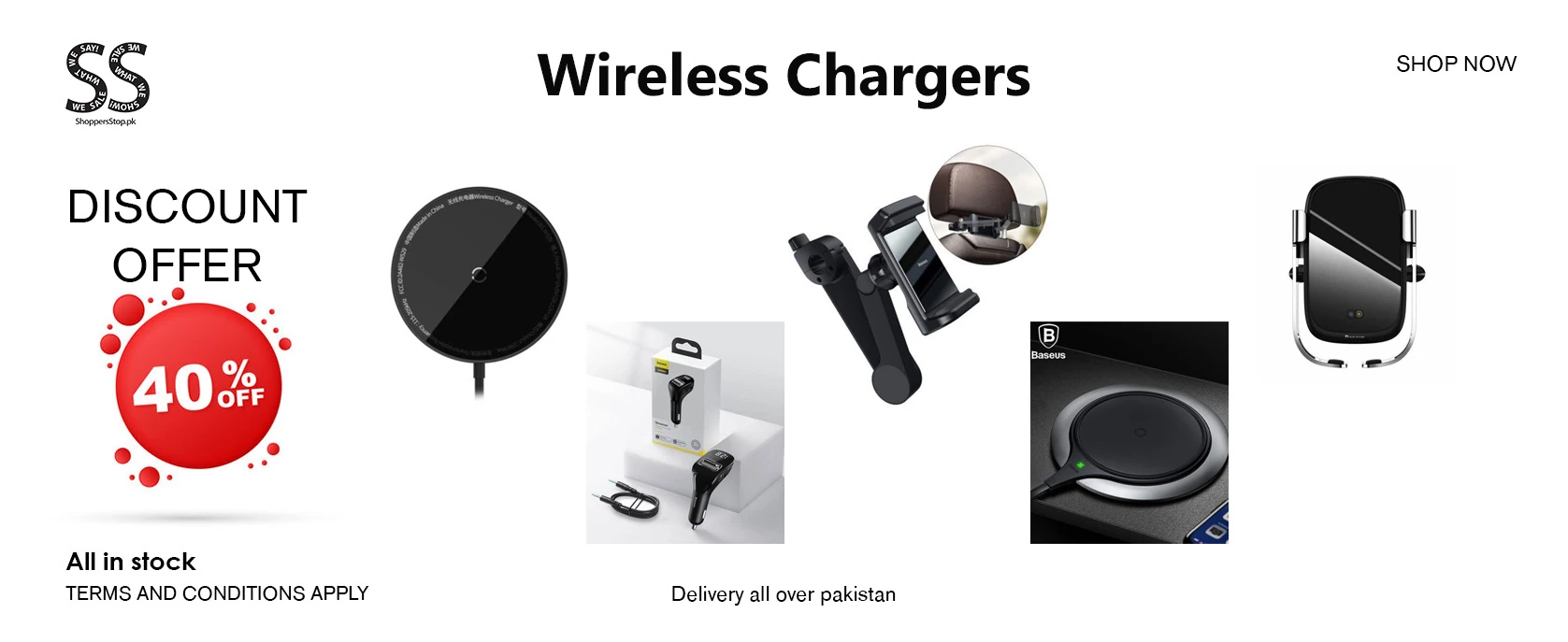Wireless chargers represent a cutting-edge approach to powering mobile devices, offering a modern alternative to conventional cables and connectors. By leveraging electromagnetic fields, these chargers enable the transfer of energy from the charging pad directly to the device, streamlining the charging process significantly. This innovative technology has witnessed a surge in popularity, particularly among users in Pakistan, who seek efficient and convenient charging solutions that also reduce cable clutter in their daily lives.
About Wireless Chargers
The operation of wireless charging is based on the principle of electromagnetic induction. Within the charger, a coil generates a magnetic field that induces an electric current in a compatible device placed nearby. This wireless mechanism eliminates the necessity for physical connections, allowing users to initiate charging simply by positioning their devices on the designated charging pad. Wireless chargers can deliver different power levels, typically ranging from 5W to 10W, depending on the specifications of both the charger and the device being charged. This aspect not only enhances user convenience but also contributes to minimizing the number of cables and adapters required for effective device charging.
As the adoption of wireless charging technology continues to rise, consumers are witnessing a broader array of products available in the marketplace. With an increasing number of devices becoming compatible with wireless charging standards, users can enjoy a seamless and efficient charging experience. Furthermore, ongoing advancements in wireless charging technology are focused on improving both efficiency and safety, solidifying wireless chargers as a practical option for everyday use in various environments.
Common Product Types and Features
- Charging Pads: These are flat surfaces specifically designed for the easy placement of devices. They are suitable for a range of smartphones and accessories, making them a versatile choice for users.
- Charging Stands: Featuring elevated designs, charging stands allow users to view their devices while charging. Many offer adjustable angles for added convenience, making them useful for video calls or notifications.
- Portable Wireless Chargers: These compact and battery-powered options are ideal for charging devices on the go. They are particularly beneficial for travelers who need to keep their devices powered without carrying multiple cables.
- Multi-Device Chargers: Capable of charging several devices simultaneously, these chargers reduce the clutter of multiple charging units and are ideal for households with various gadgets.
- Fast Wireless Chargers: Designed to deliver higher power output for quicker charging times, these chargers are compatible with devices that support fast charging, thus enhancing user efficiency.
- Compatibility Considerations: Many wireless chargers are designed for specific devices or adhere to industry standards such as Qi, which is widely accepted across a variety of brands and models.
- Material and Build Quality: Wireless chargers are available in a range of materials, including plastic, metal, or glass. The choice of material can influence both the durability and aesthetic appeal of the chargers, allowing users to select options that fit their style and functional needs.
With the ongoing integration of wireless charging into everyday technology, users can expect continued enhancements in performance and compatibility. This evolution not only caters to the increasing demand for convenience but also promotes a more organized and efficient charging environment. As the technology matures, the potential for additional innovations in wireless charging will likely expand, ensuring that it remains a valuable asset in the realm of mobile device management.
FAQs About Wireless Chargers

Total 0
Nothing Found